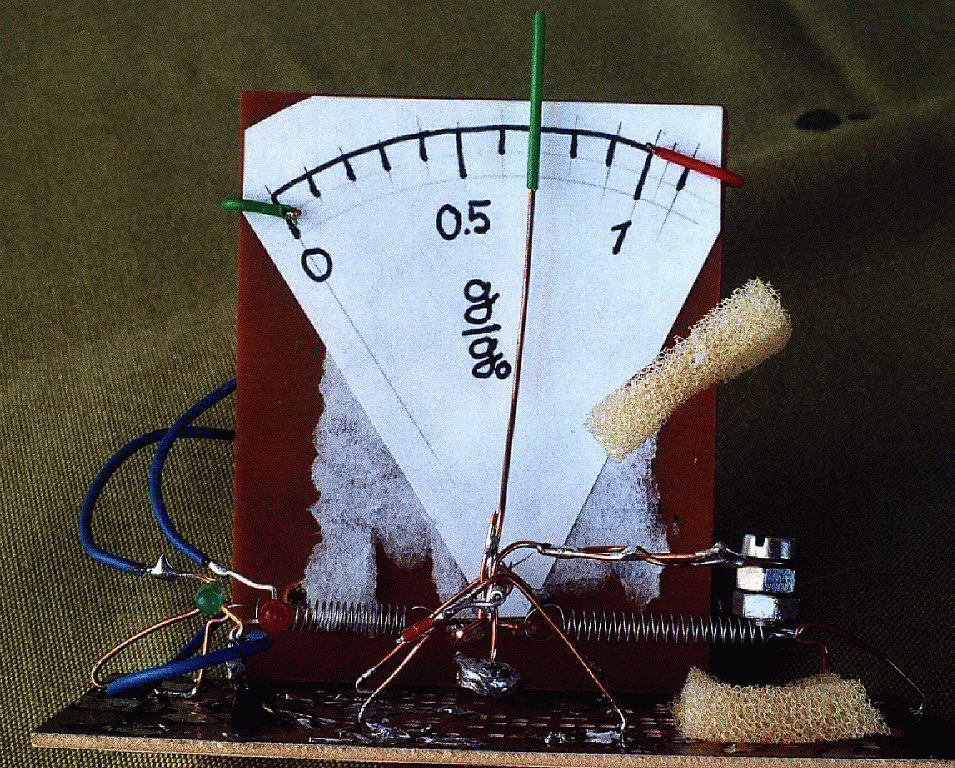
The Flimsy AcceleroMeter: Calibration
Joachim Köppen DF3GJ Kiel/Strasbourg/Illkirch Winter 2004

The calibration of the accelerometer is simple: when the device stands upright - with the pin axle A being horizontal - we read 1.0 g, the Earth's gravity of 9.806 m/s^2. When we tilt it backwards until the pin becomes vertical, the weight of the mass acts only parallel to the pin axle, and thus provides no force component to make it rotate. In consequence, the springs go back to their rest positions: we read 0.0 g. When the base plate is tilted by an angle alpha against the horizontal, the component of the weight responsible for rotating the pointer is cos(alpha) its value under 1 g. E.g. at alpha = 45 degrees we read 0.7 g, as in the picture above.
A mathematical analysis of the accelerometer yields that as long as the pointer's deflection stays within 30 degrees against the vertical, one may assume a linear relationship between deceleration and acceleration (within 5 percent). So we get a linear dial.
The Role of Friction
When you tilt the device, the pointer should move across the dial easily, following the tilting steadily and without hesitation or backlash. Friction in the bearings and the link will imprede the pointer to react promptly, as the force necessary for a movement must be large enough to overcome any friction. Tilting up and down very slowly will give you a good indication how large the friction is. Try to make it as small as you possibly can!
Oscillations tell about Response Time
Depending on the springs, the mass, and the friction in the device, the pointer may undergo a couple of oscillations before settling into a new reading. These oscillations are inherent to any instrument involving a balance of forces by a restoring force, such as from elastic springs. The longer the oscillations persist, the smaller is the damping of the instrument, caused by friction. One may increase the damping so that the pointer goes to its new position with no or only a very slight overshoot. This is the case of critical damping, and is the fastest way the instrument adjusts to a new reading. In our instrument, one may add damping by glueing a paper vane to the pointer whose optimal size one tries out.
The period of the oscillation is the time constant with which the instrument can react to changes. You can directly determine this time constant by watching the oscillations and estimating their period when you tilt the instrument to give a mid-scale deflection, and then give the weight a small short push!
| Top of the Page | back to Main Page | back to my Home Page |